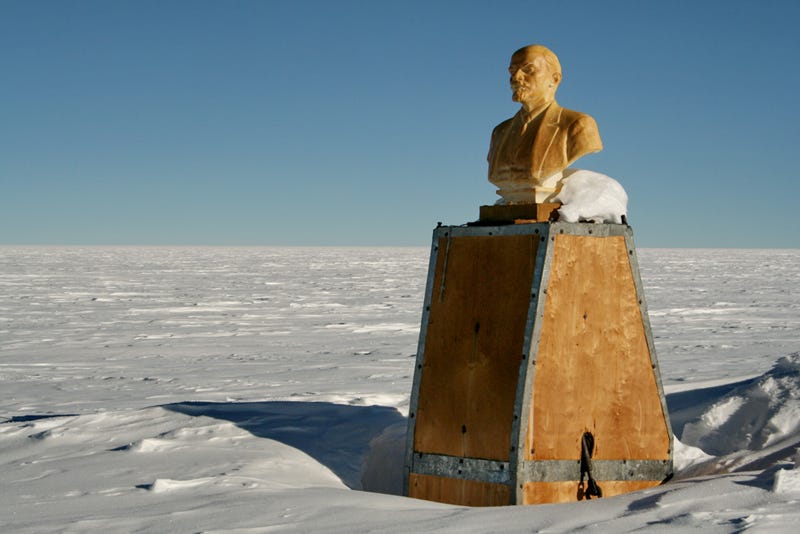 istance from the sea has been historically related to isolation and inaccessibility. So much so that a geographical concept was invented to name such places.
istance from the sea has been historically related to isolation and inaccessibility. So much so that a geographical concept was invented to name such places.
In 1920, Vilhjalmur Stefansson was the first to introduce the concept of a Pole of Inaccessibility, in order to distinguish between the North Pole and the most difficult-to-reach place in the Arctic. Today, the concept can be defined as the location furthest from a particular coastline. In terms of radius, it’s a point that’s precisely equidistant from three faraway coastlines.
For example, the North American Pole of Inaccessibility is in South Dakota, inside the Pine Ridge Indian Reservation, more than 1000 miles (around 1,650 meters) from the nearest ocean.
The South American pole is in the Brazilian state of Mato Grosso, near the border with Bolivia, and the Eurasian pole of inaccessibility is in the Xinjiang Autonomous Region in China, near the border with Kazakhstan.
Since then, the term has been used mostly to refer to the Southern Pole of Inaccessibility: the point on the Antarctic continent most distant from the Southern Ocean.
Cold(est) War
When the United States (US) built the Amundsen–Scott Station at the geographical South Pole, in November 1956, they occupied the most prominent place in Antarctica. Before 1956, there was no permanent man-made structure at the pole and practically no human presence in the interior of Antarctica.
In response, on December 14th, 1958, a Soviet group of 18 scientists and explorers arrived at the Southern Pole of Inaccessibility. They were part of the third Soviet Antarctic Expedition, traveling on a convoy of tractors, one of which carried a pre-fabricated hut.
Upon arriving, they installed the hut. Next to it, they cleared the area for an airstrip, and a Li-2 airplane landed there on December 18th. The outpost also had a diesel power generator and a transmitter. At the very top of the outpost, they placed a plastic bust of the communist revolutionary, Vladimir Lenin.

Although they had six months of food and fuel, after twelve days, they decided to pack up and abandon the station. Turns out this Pole, with its average year-round temperature of -58.2º Celsius (−72.8 °F), and an altitude of 3,724 meters (12,218 feet) above sea level, was simply too bleak for humans to have an on-going presence.
It was also way harder to reach than say, the geographic South Pole (the southern-most point on Earth). While the Amundsen expedition reached the geographic South Pole for the first time in 1911, it would take 47 more years for humans to reach the Southern Pole of Inaccessibility, 878 km (546 miles) away.
Even with all the technological advancements that happened in those 47 years, explorers accustomed to Antarctica’s weather lasted less than two weeks before abandoning the post. The station was deemed to be too far from other research stations to be used permanently, so it was left to be used for future short-term visits only.
In 1964, after a brief Soviet visit, a team of Americans arrived at the research station, part of South Pole–Queen Maud Land Traverse, and they allegedly repositioned Lenin’s bust, so that it was facing Washington D.C.

The Soviets visited the station for the last time in 1967, during the 12th Soviet Antarctic Expedition.
It would take another 40 years for humans to make it back to the Southern Pole of Inaccessibility. During that time, many of the world’s Lenin busts had been destroyed, removed, or repurposed, with the fall of the Soviet Union in 1991. During those 40 years, no one knew what had become of that research station.
40 years later
In 2007, an expedition made it back to this Southern Pole of Inaccessibility. As they approached, they saw that the 240 square foot hut had been buried under four decades of snowfall and shifting ice. And yet, the bust of Lenin was still there. It usually stood atop the structure, but now, it was the only part of it that wasn’t covered in snow.

It got a bit yellow, but now you can walk up to it and take pictures. On December 27th, 2011, Sebastian Copeland and Eric Mcnair-Laundry became the first to reach this pole without resupply or mechanical support, as part of the first East/West crossing of Antarctica through both poles (over 4,000 km, or 2,485 mi).
It’s been almost ten years since humans last checked on the Lenin bust at the Antarctic Pole of Inaccessibility. Is it still there? Has it changed, as we also have? Will it be buried in snow, lost forever in the great white waste? I think it’s time we send someone over to check. Does Antarctica demand quarantine on arrival?

TV producer, reader, writer, bibliophile, and map lover. Did I mention I also love history?
?? IG: joao.pa.fernandes





